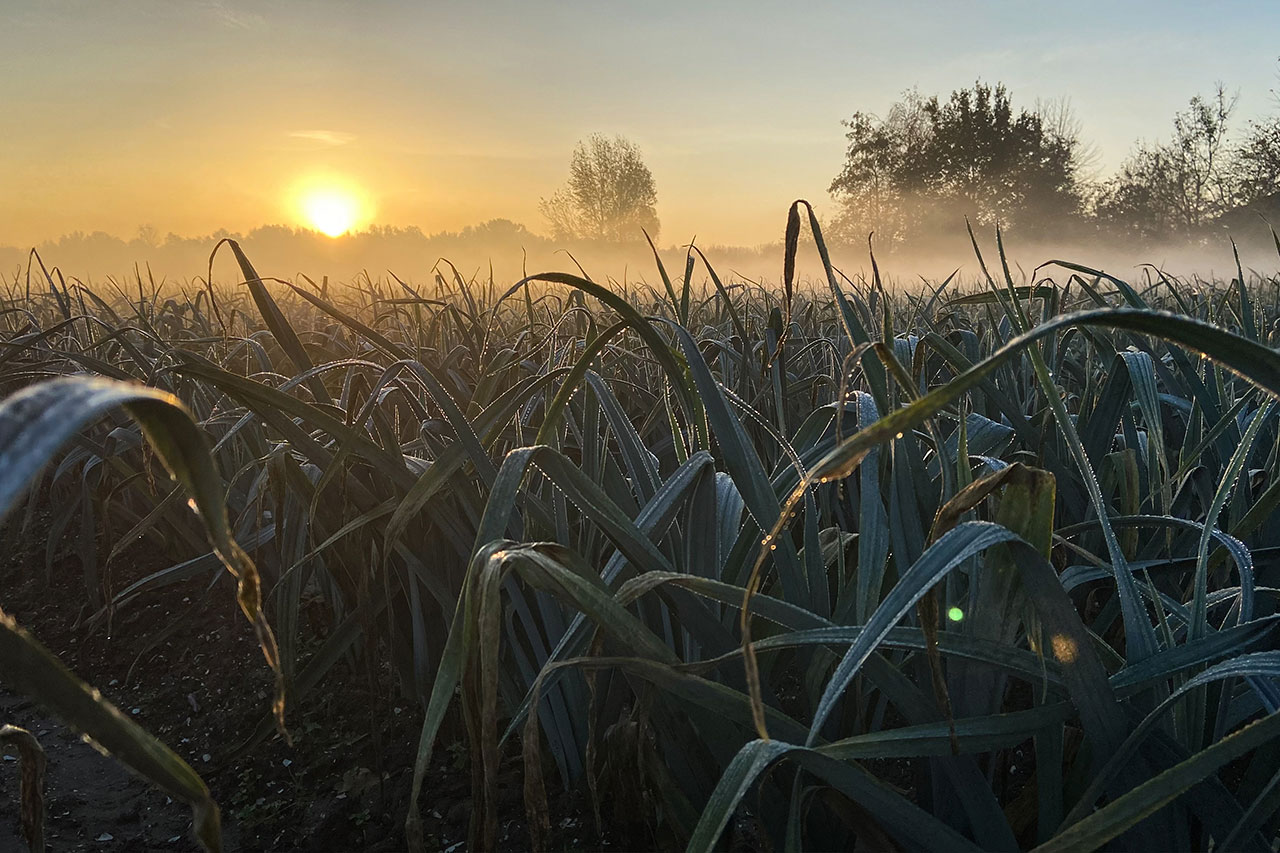
Photography © Daan Roosegaarde
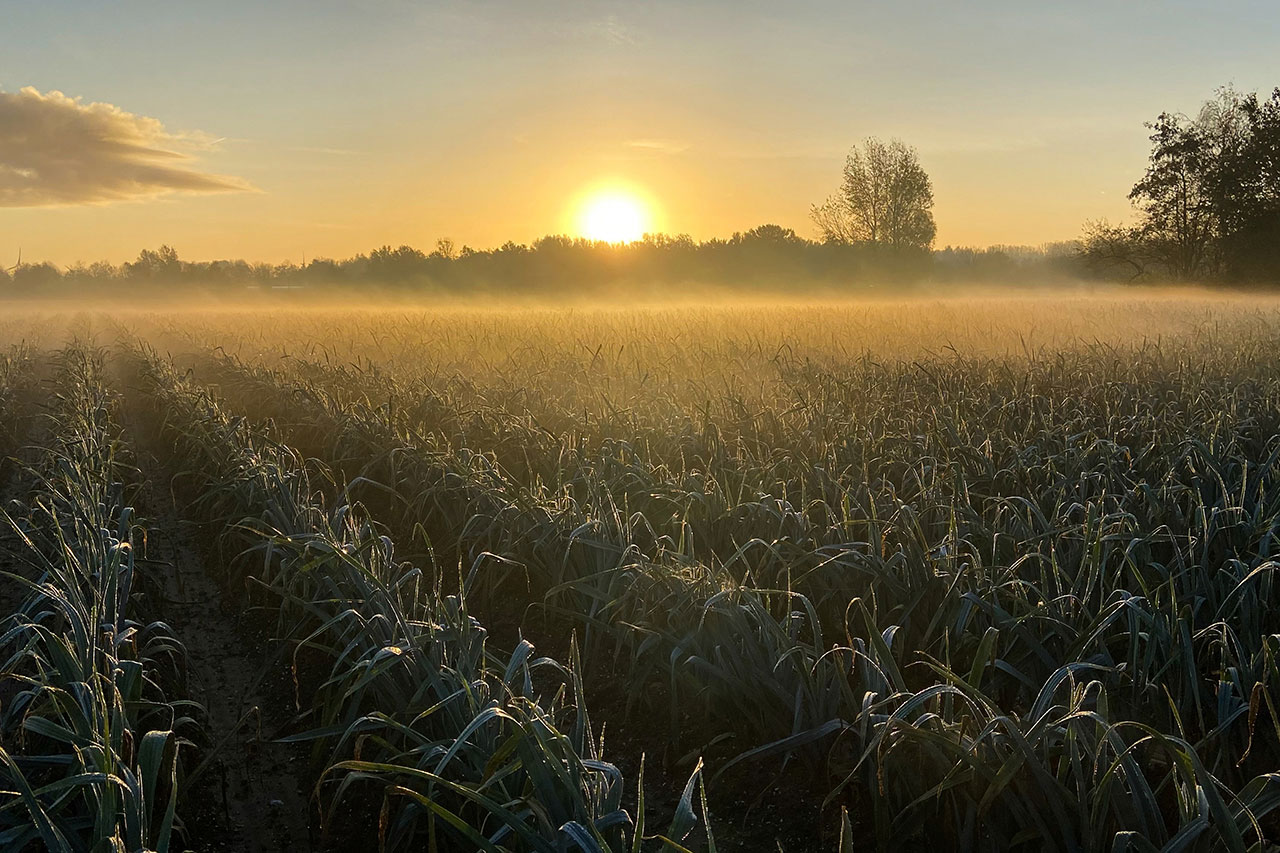
Photography © Daan Roosegaarde
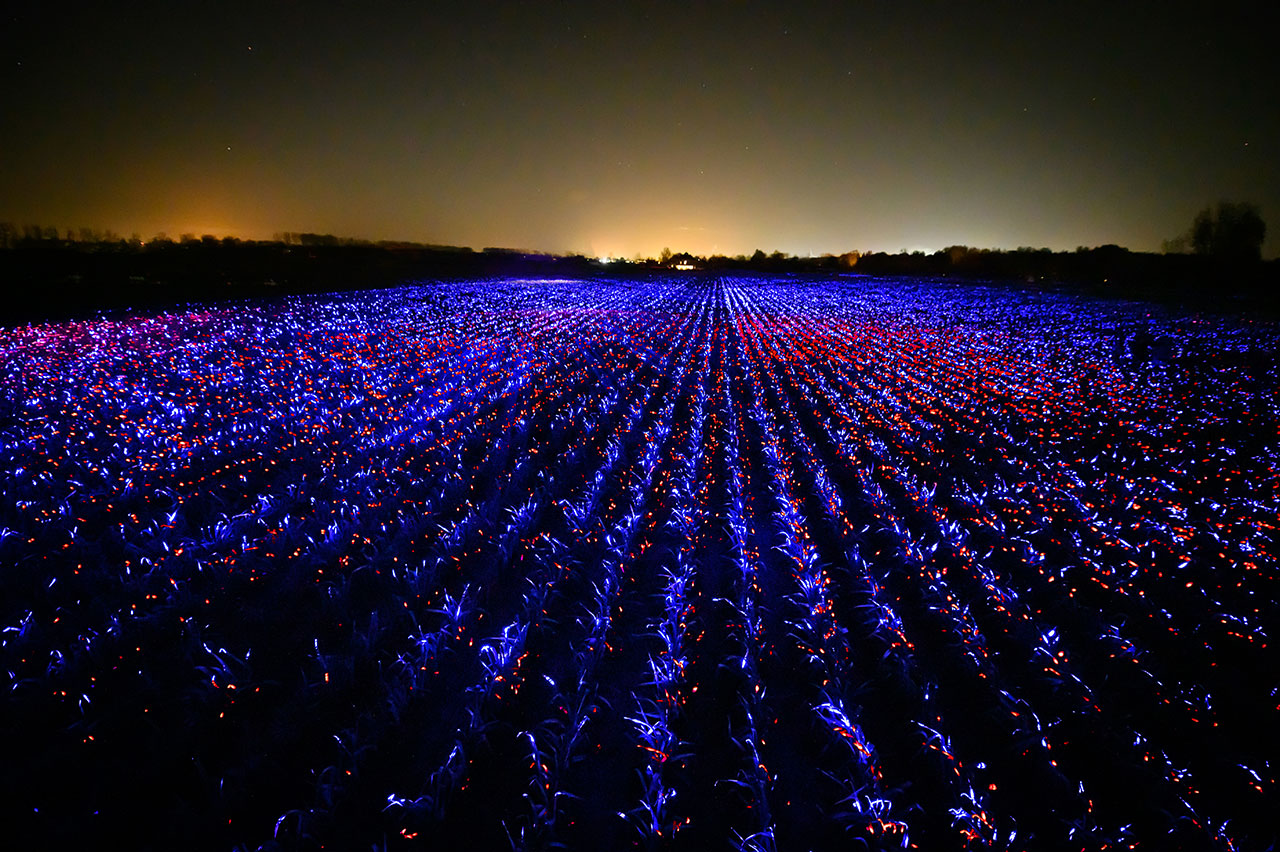
Photography © Daan Roosegaarde
Part of Rabobank’s artist-in-residence program, the project was developed in response to a simple yet momentous question: What is the future of food? Encouraged by Rabobank to “be radical”, Daan delved into the science of food production with the help of Wageningen University & Research, focusing on photobiological lighting technology. “Light recipes”, Daan says, “was one of the terms that kept coming up in discussions with scientists”.
Fast forward two years of research and experimentation, and Daan has combined blue and red light with UV light to develop his own “light recipes”. While red and blue light can enhance plant growth by strengthening their metabolism, UV light can increase plants’ resistance to pests and disease and therefore thus the potential to reduce the use of pesticides by 50%. Whereas the former has been in use for some time (but only in greenhouses), the latter is a new technology, which makes their combined use in open fields a radical proposition – just what the program asked for in other words.
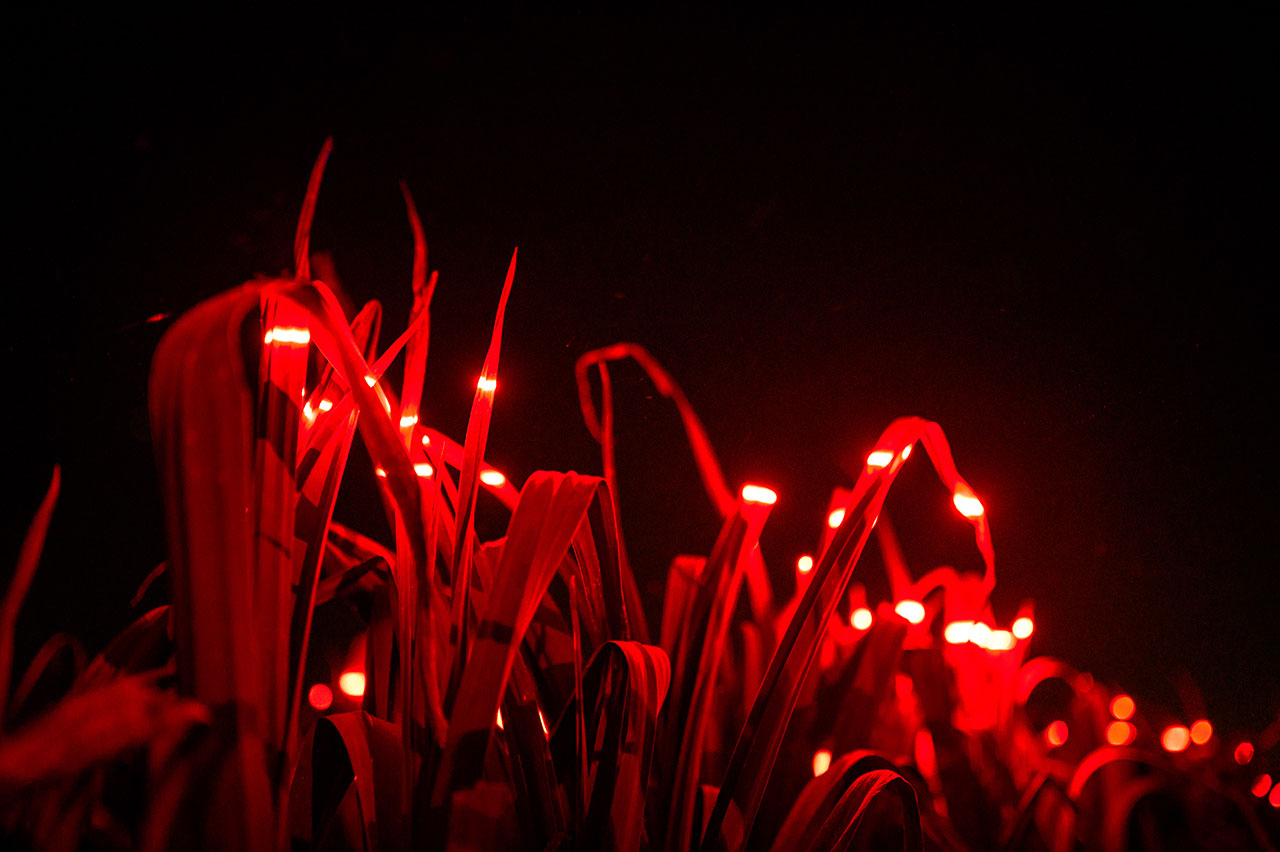
Photography © Daan Roosegaarde
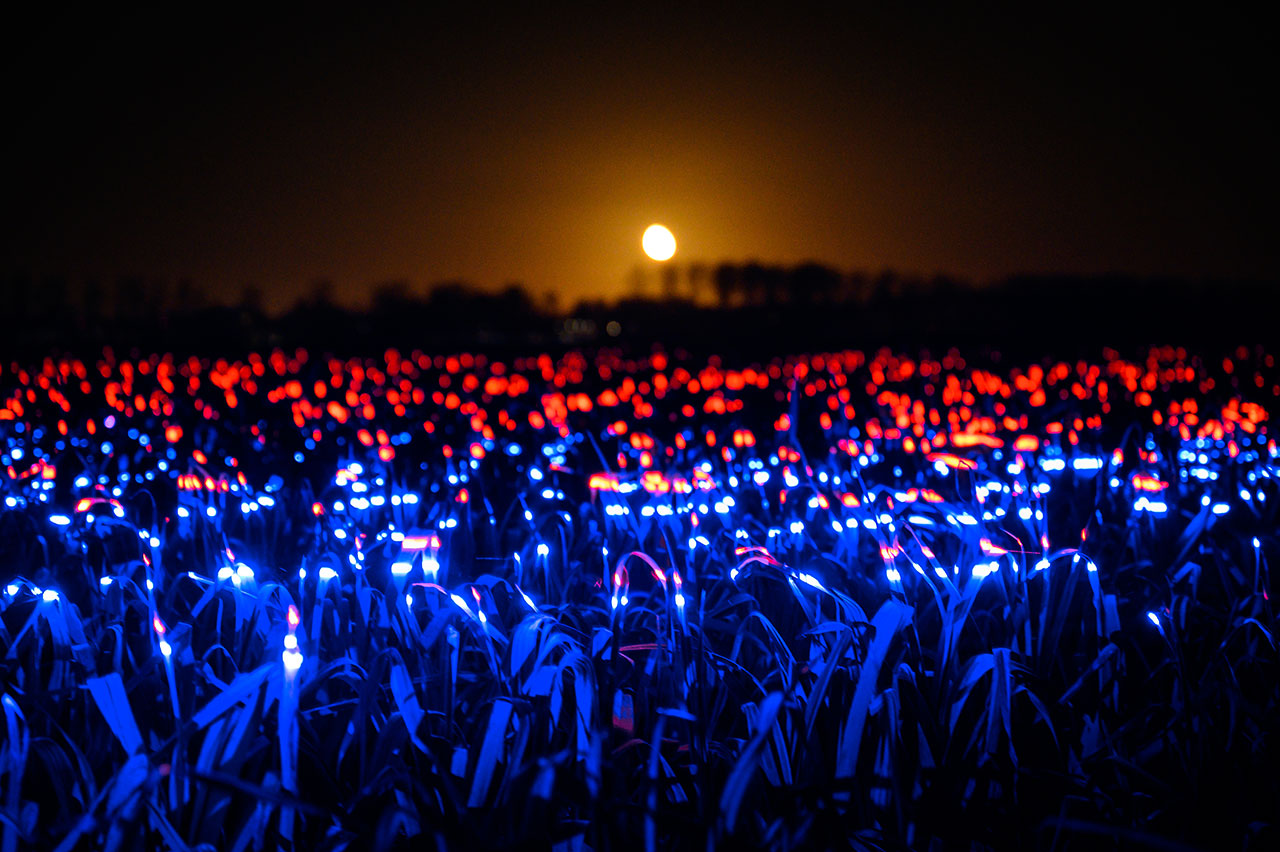
Photography © Daan Roosegaarde
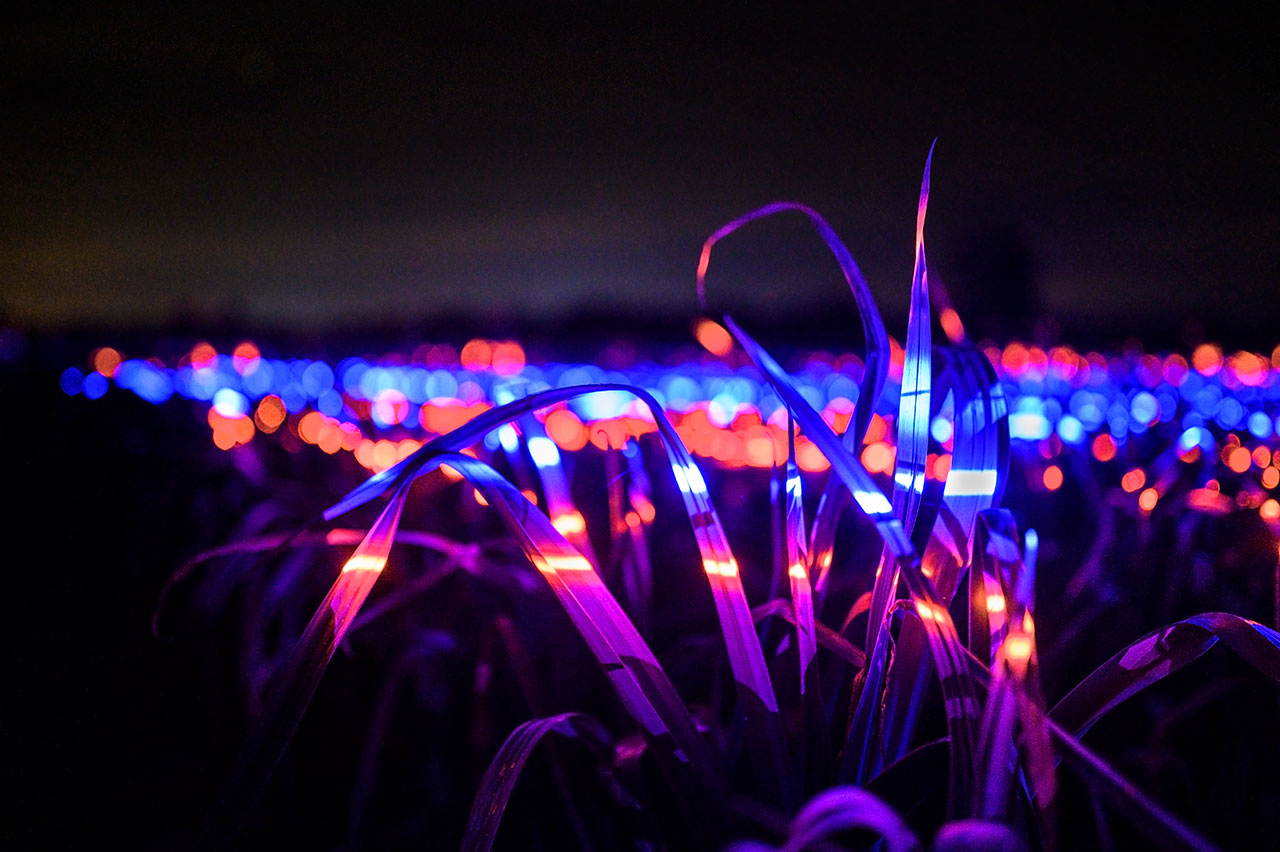
Photography © Daan Roosegaarde
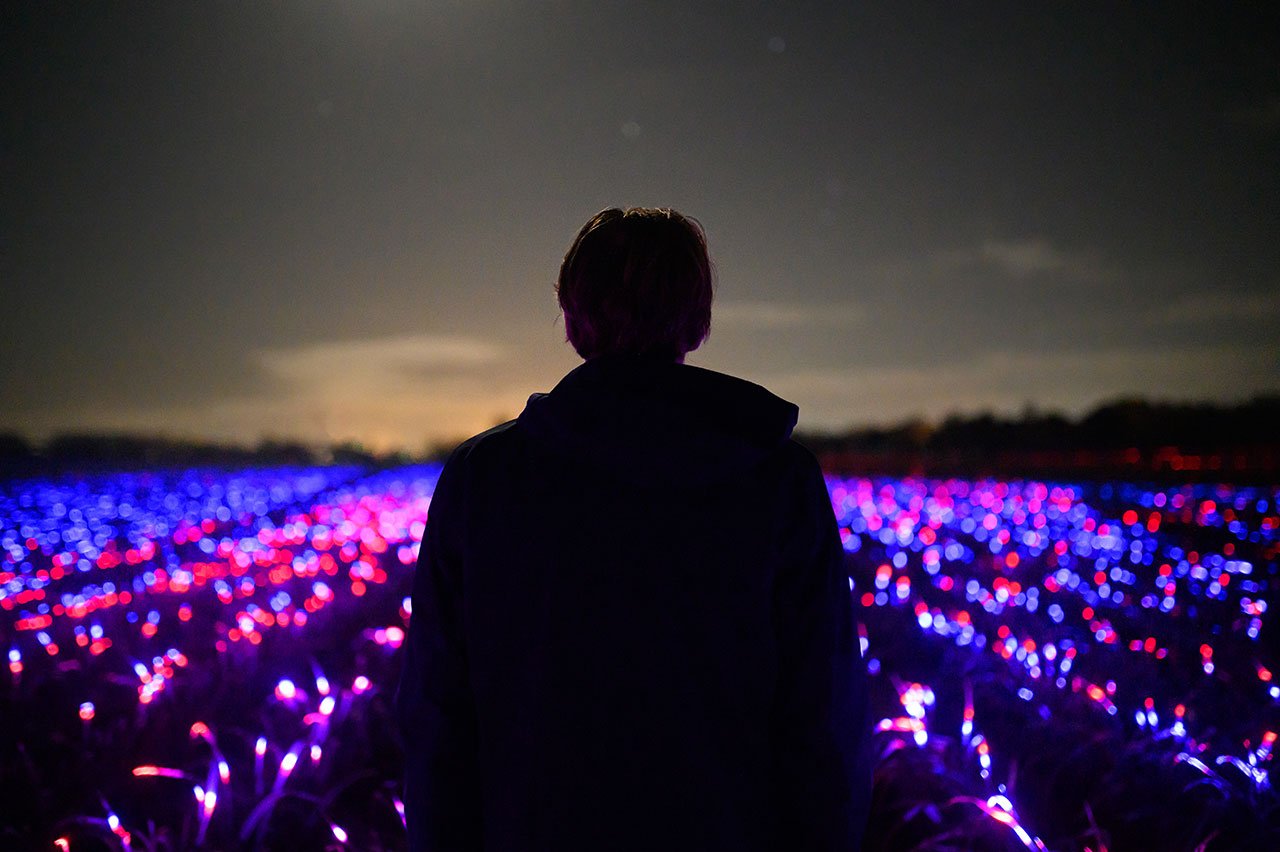
Photography © Daan Roosegaarde
After three to four months of testing in different locations, GROW’s world premiere was showcased in a field of organically farmed leeks in Flevoland, The Netherland’s newest province which was reclaimed from the sea in the 1950s and 60s. With most of their country below sea level, the Dutch are famous for their perseverance and ingenuity when it comes to co-existing with nature – in our chat, Daan mentions the still functioning, 300-year-old windmills of Kinderdijk that prevent flooding and which he considers to be man-made robots – so Flevoland is a fitting location for a project that explores the creative synergies between man and nature.
Installed over the course of a few weeks – in spite of the freezing temperatures and rain that the team had to endure – the installation comprises multiple LED light sources that move up and down in order to evenly distribute the light across the field. The result can only be described as hypnotic: red and blue pointillistic pattens ebb and flow, forming luminescent waves tenderly caressing the darkened landscape. Of course, watching it on a computer or smartphone screen is not the same as experiencing it on location, but the ethereal sensation still comes through. Then again, you don’t need such an elaborate installation to appreciate the beauty of such a location Daan points out, recalling how sublime it was to watch the sun rise over the fields after having spent the night setting up and testing the equipment – it’s a simple yet magical experience he strongly urges everyone to partake in.
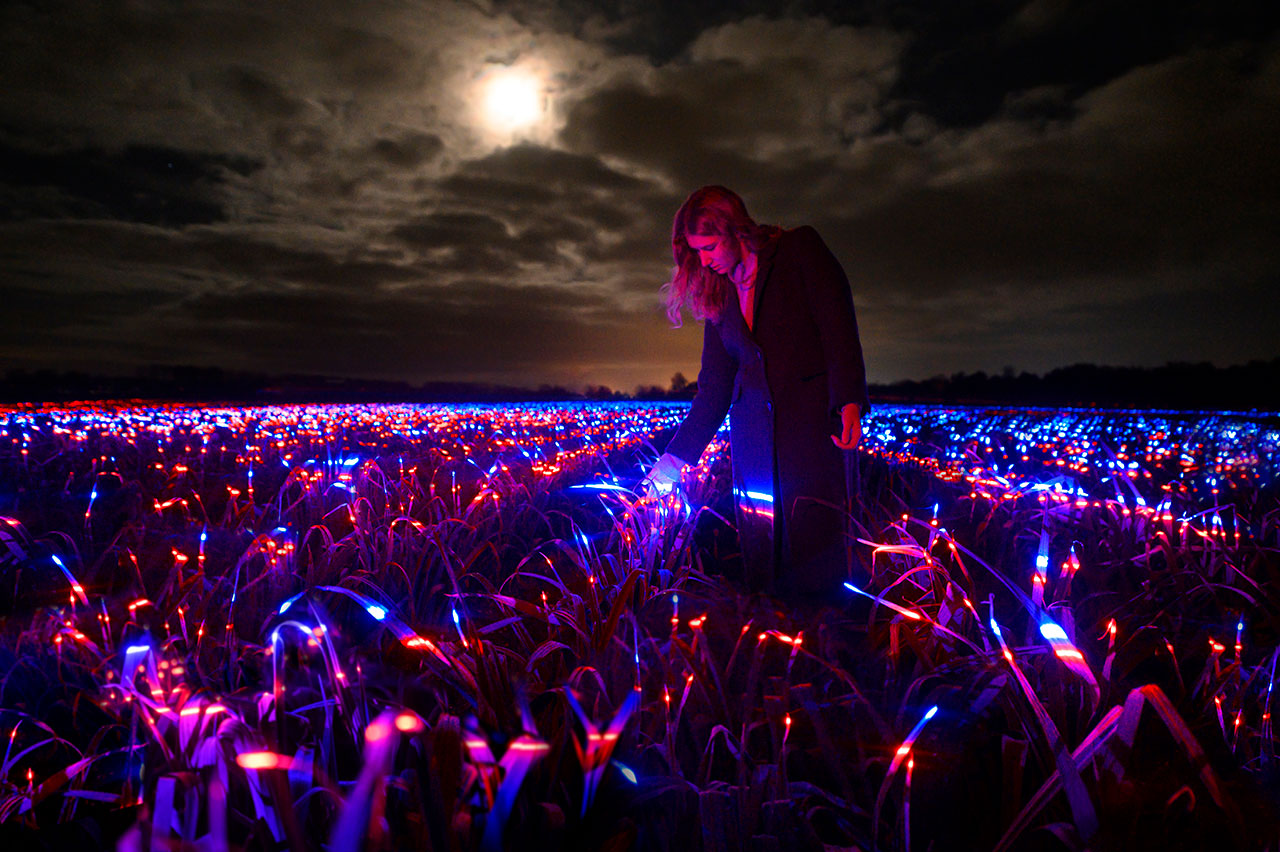
Photography © Daan Roosegaarde
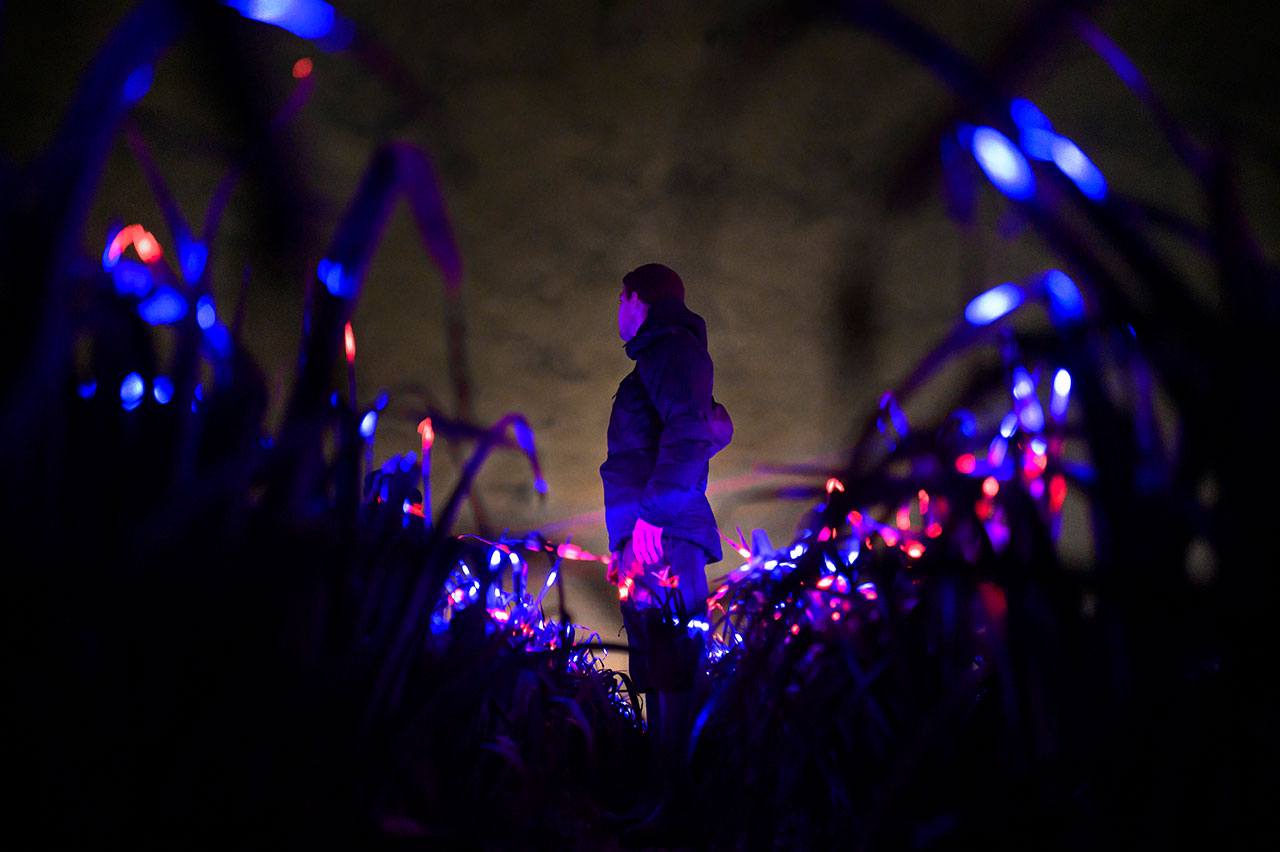
Photography © Daan Roosegaarde
GROW’s ultimate aim Daan says is to inspire positive curiosity about the future. This actually represents the motivation in its entirety behind all of his work, namely to encourage the public to think about the future not as a source of anxiety but of hope. For the artist, mulling over the future in terms of problems that we have to overcome – think climate change, disease outbreaks and overpopulation simply isn’t productive. Instead, he believes that we should think about the future in terms of possibilities, of all the things that we can accomplish to make the world a better, more beautiful place. Beauty, he says, is the most powerful incentive to embrace change, which explains why all of his projects, no matter how practical or technologically advanced they may be, are imbued with poetic beauty – from his light emitting bicycle path inspired by Vincent van Gogh's Starry Night painting and luminous energy-generating kites, to the “techno-poetry” of the heat sensitive smart flowers which unfold in response to human warmth and light.
With an ambitious plan for GROW to tour 40 countries, highlighting a different crop in each one, and plans to use the disinfecting power of UV light to eliminate coronavirus in public spaces for his next project, Urban Sun, no one can accuse Daan of lacking vision or purpose.
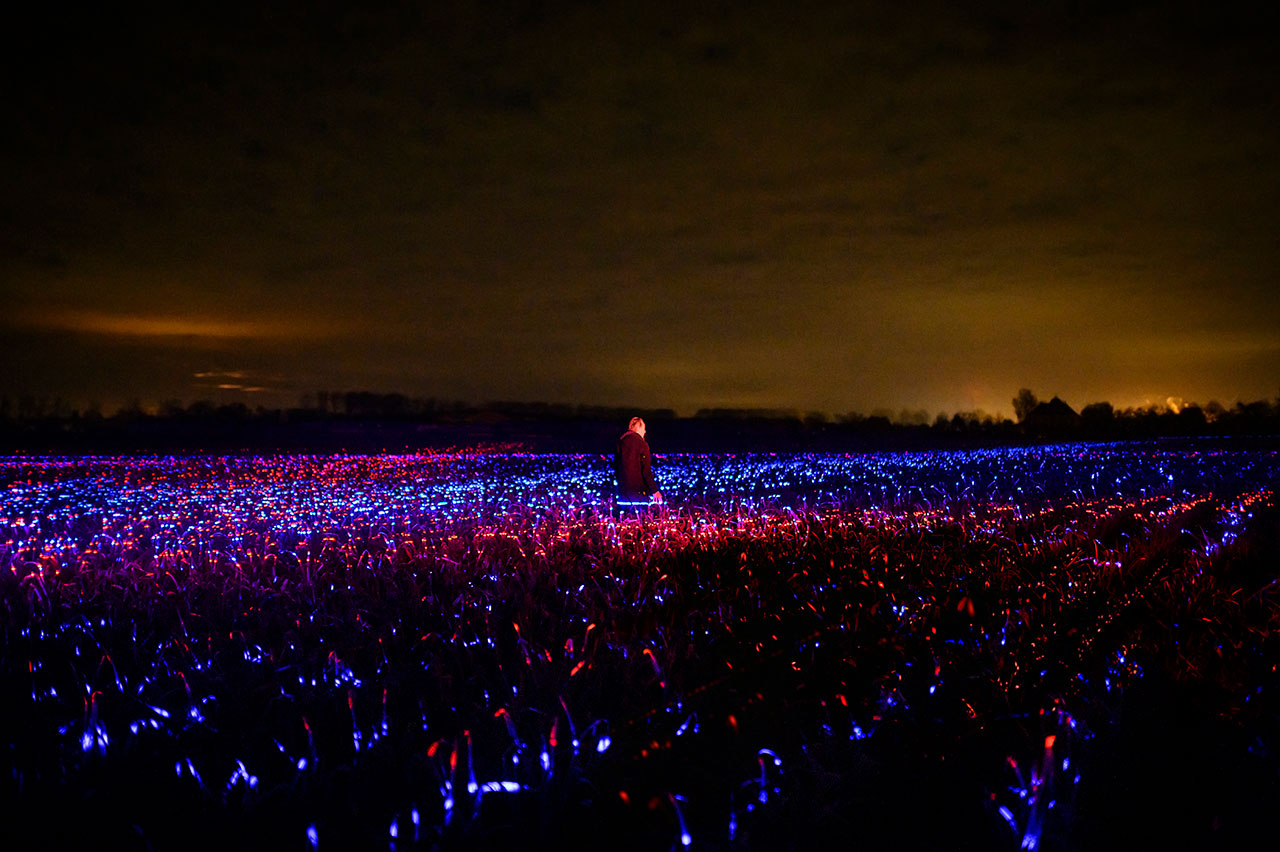
Photography © Daan Roosegaarde
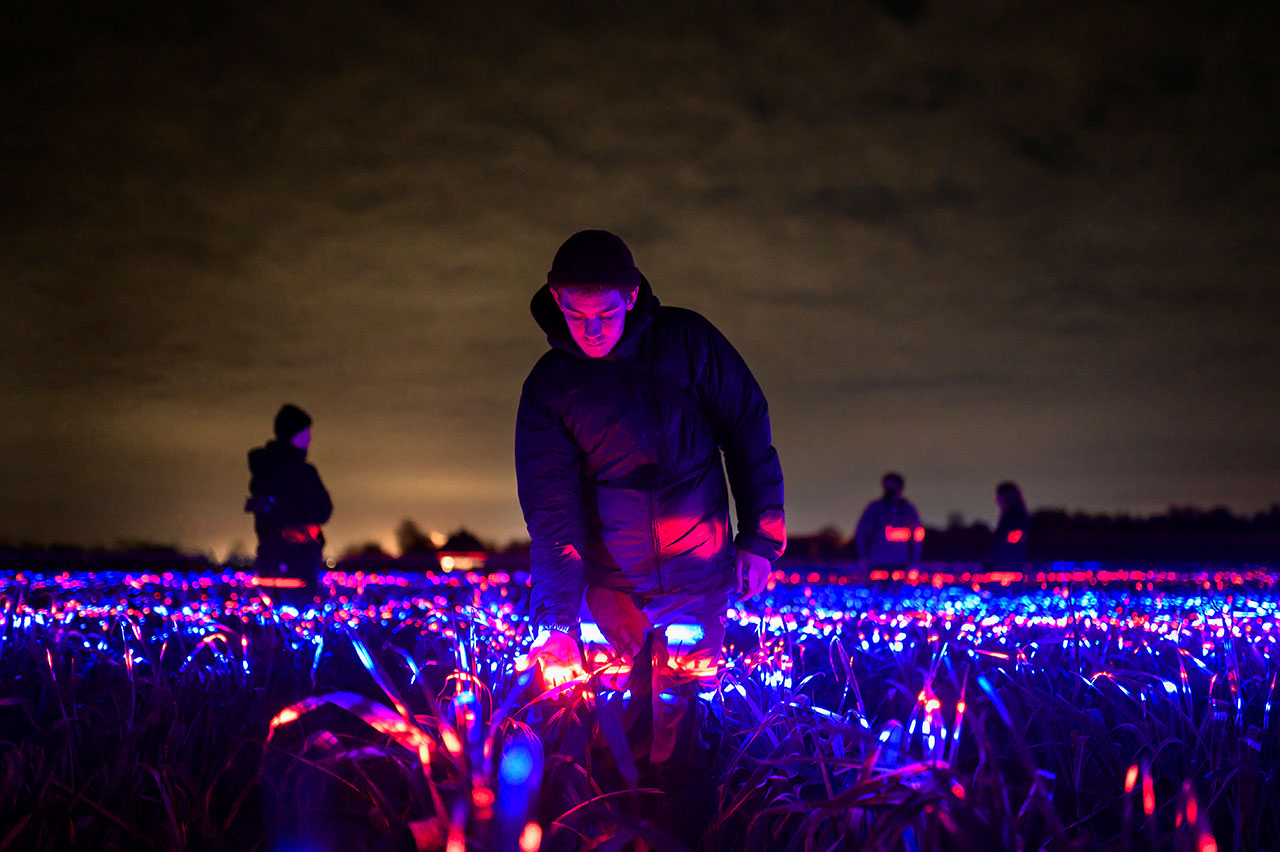
Photography © Daan Roosegaarde
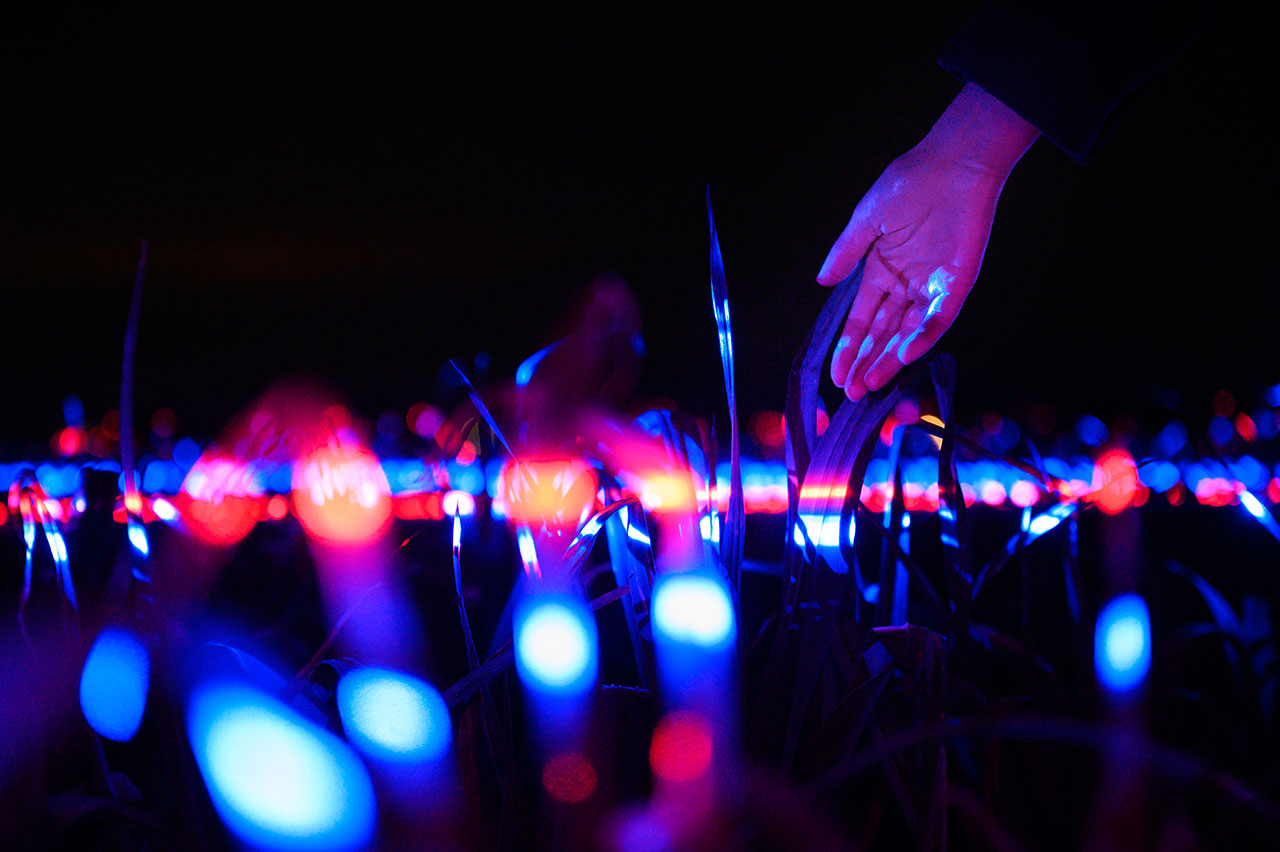
Photography © Daan Roosegaarde
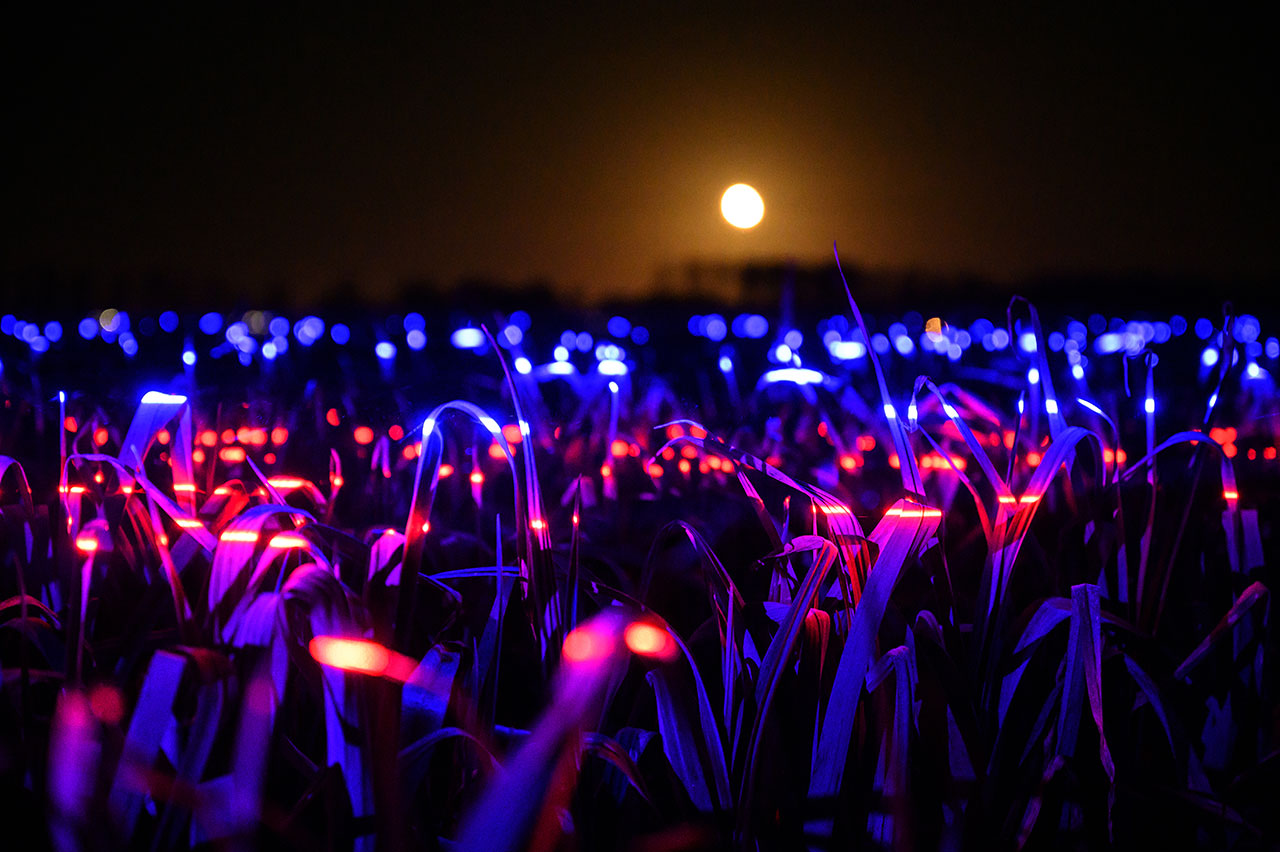
Photography © Daan Roosegaarde















